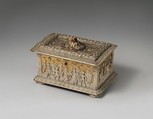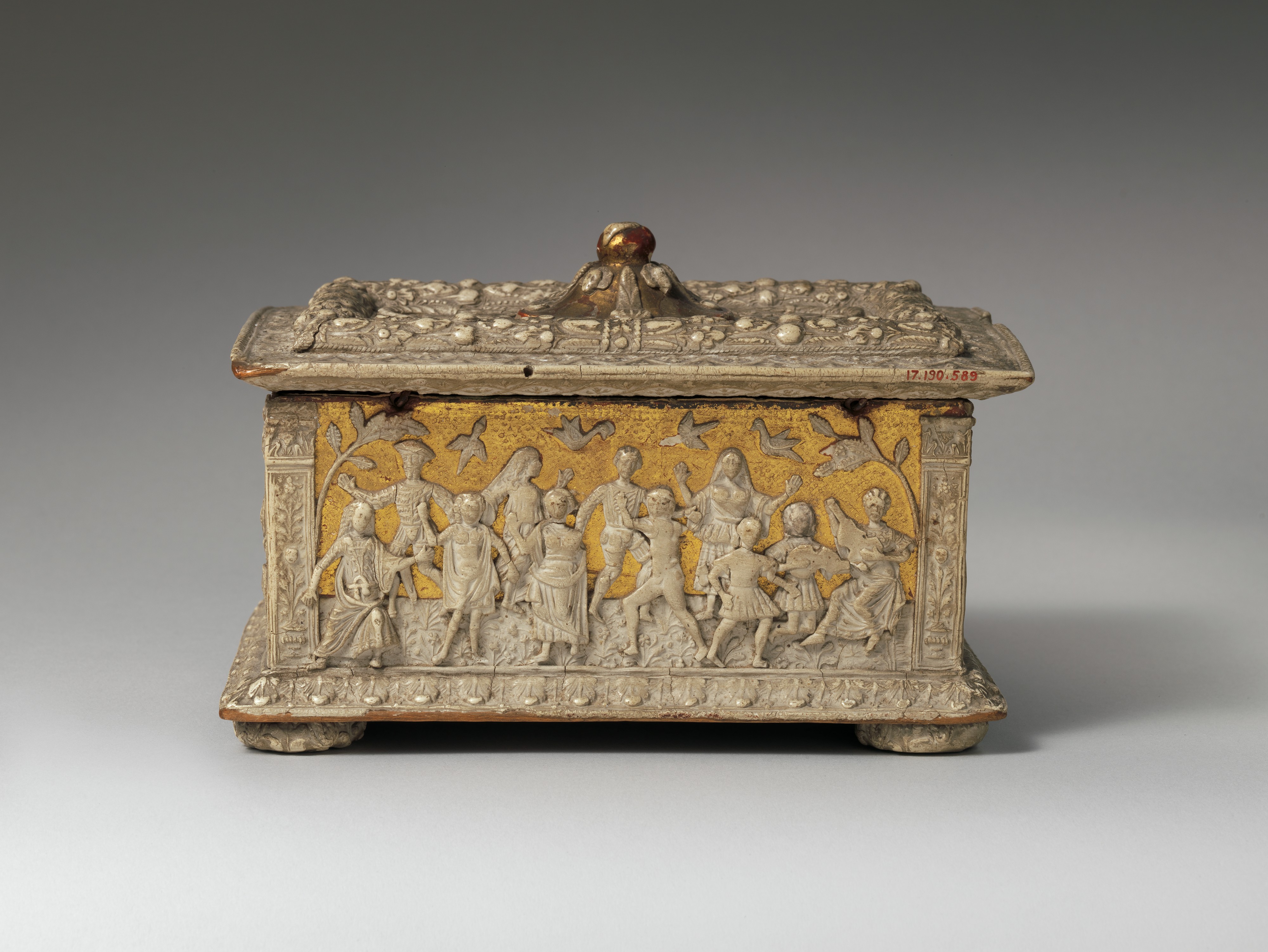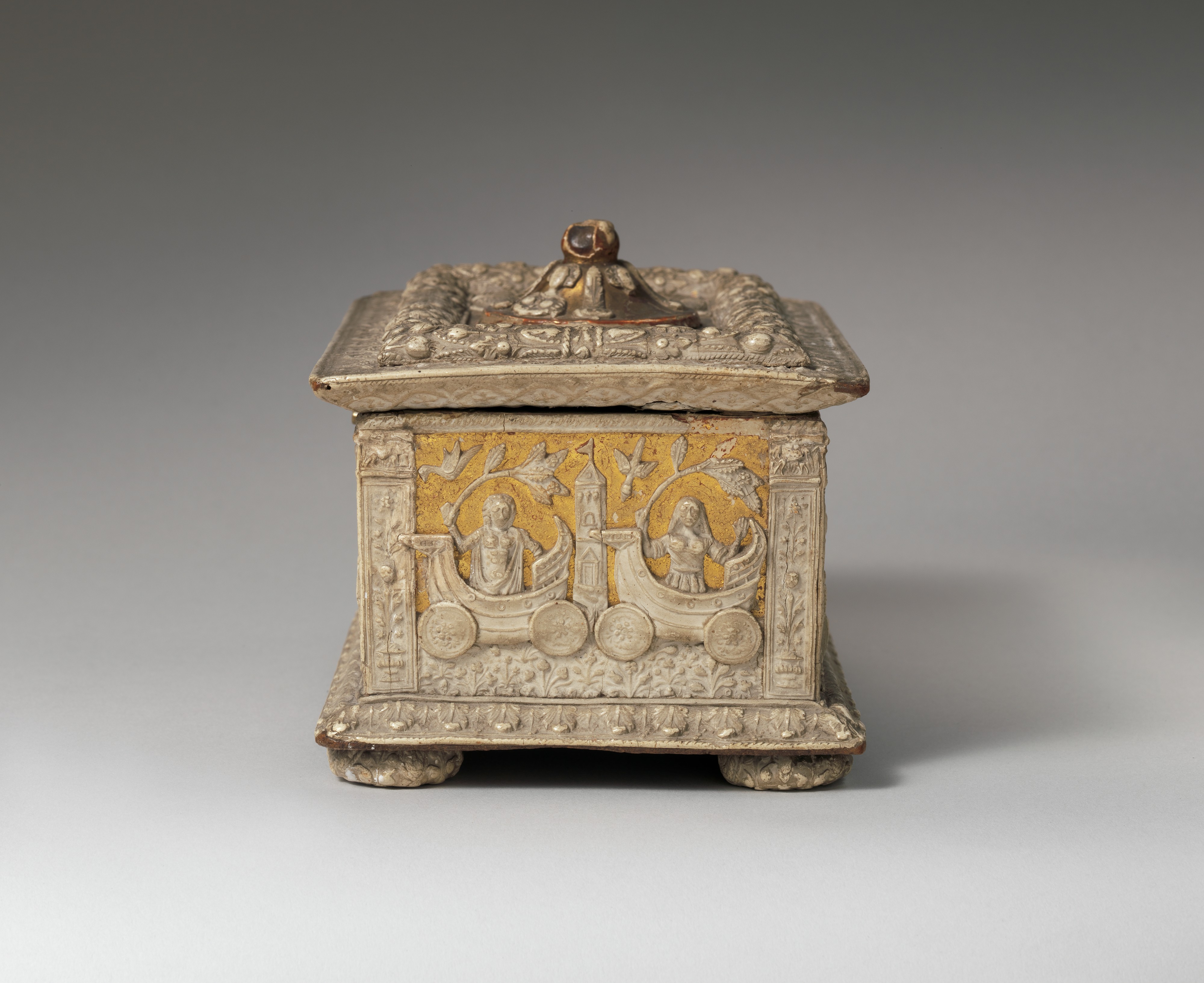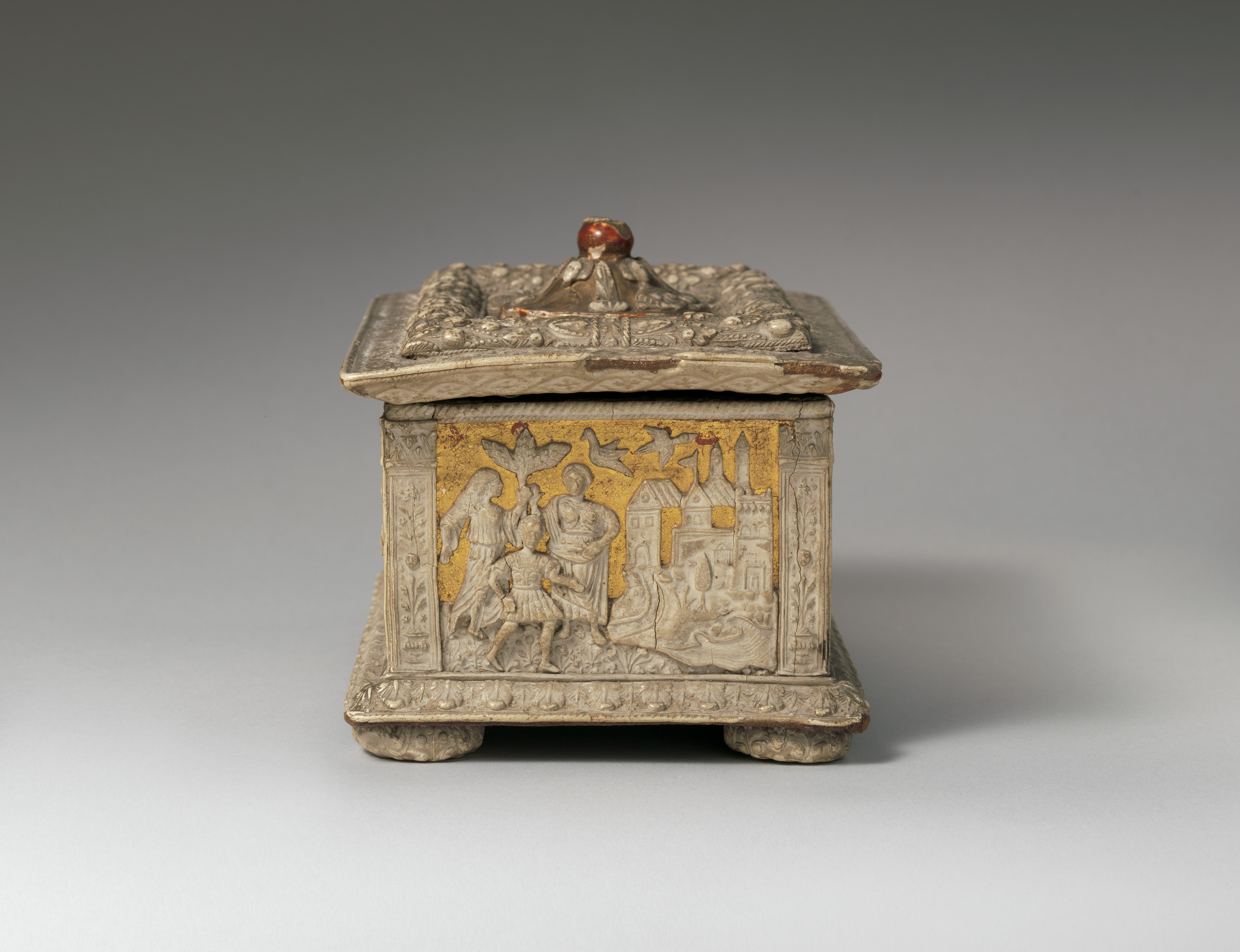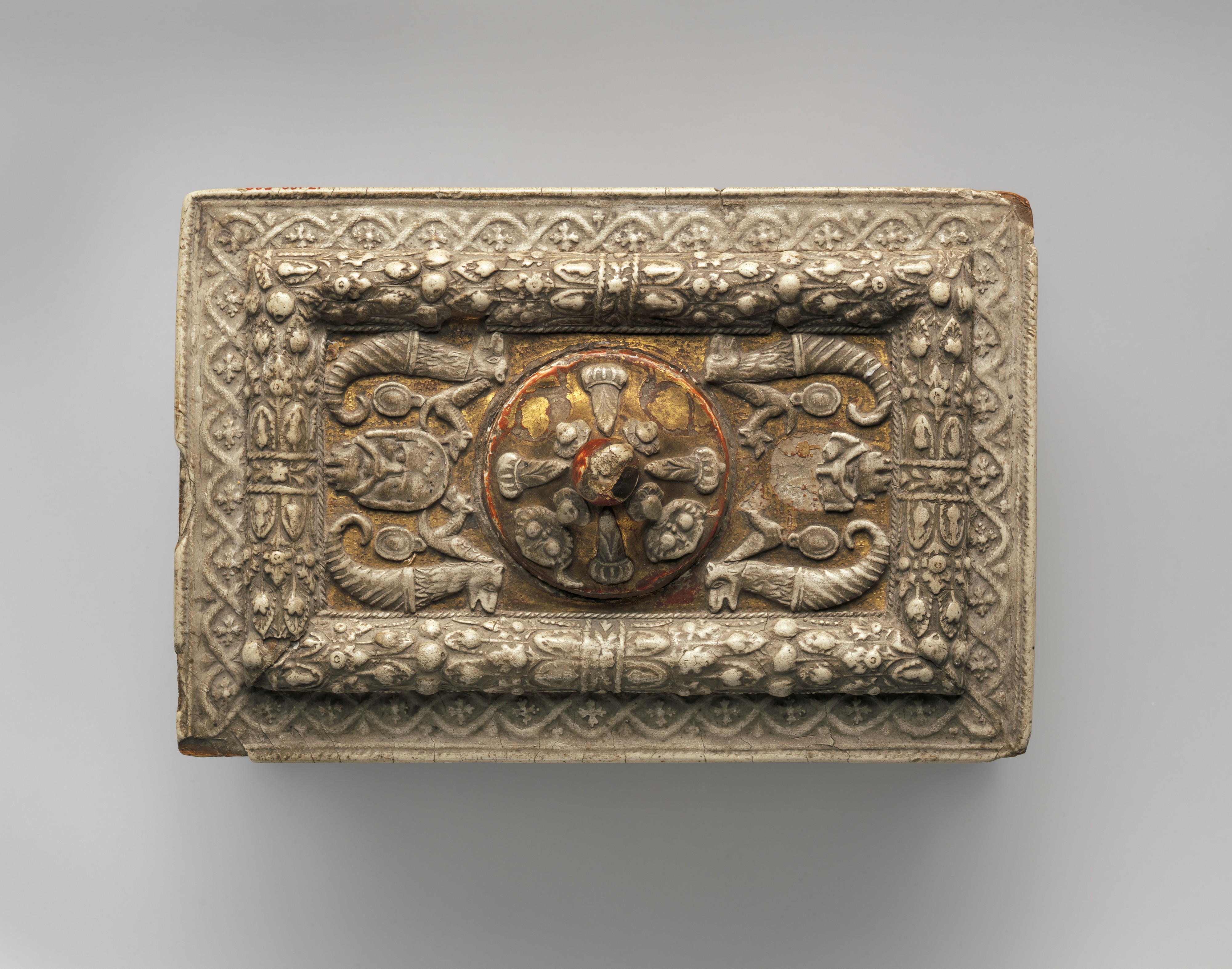Casket (cassetta)
The sides of this casket are decorated with scenes of dancing figures and musicians, chariots, and figures before a cityscape, framed by classical pilasters at the corners. It has been suggested that the pastiglia was left uncolored to simulate ivory, the creamy white surface of which was frequently compared to female beauty—appropriate given that these caskets probably held toilet implements. Molded pastiglia, a composition consisting of either gesso or pulverized white lead with an egg binder to which musk was added, was applied to the surface of small caskets and deliberately left ungilt and unpainted, so that the relief exuded a musky scent. The technique was introduced to Ferrarese craftsmen at the end of the 1440s by a French immigrant, Carlo di Monlione.
Due to rights restrictions, this image cannot be enlarged, viewed at full screen, or downloaded.
This artwork is meant to be viewed from right to left. Scroll left to view more.
